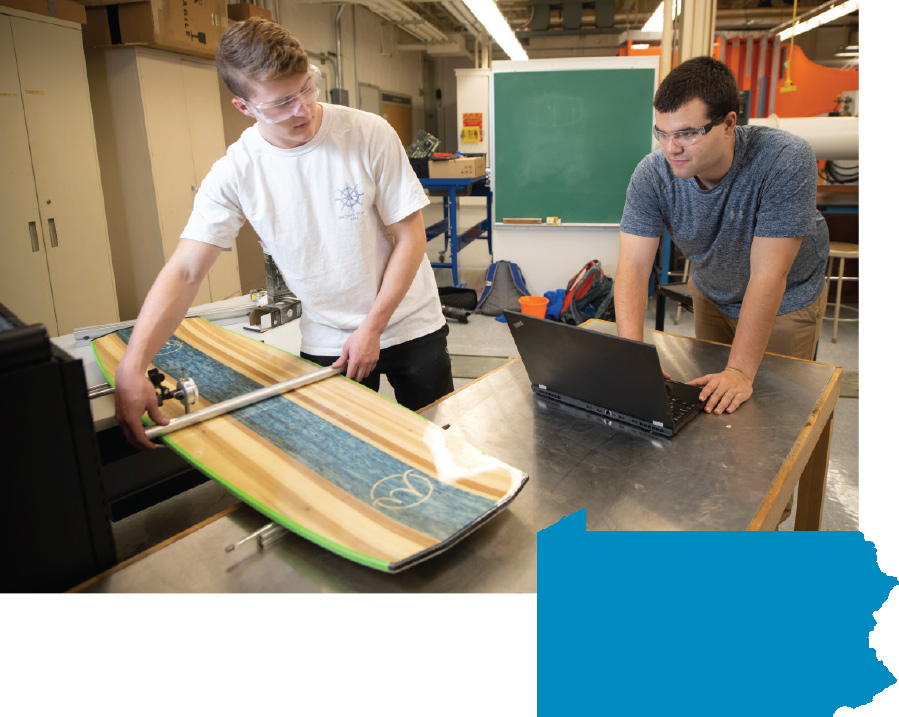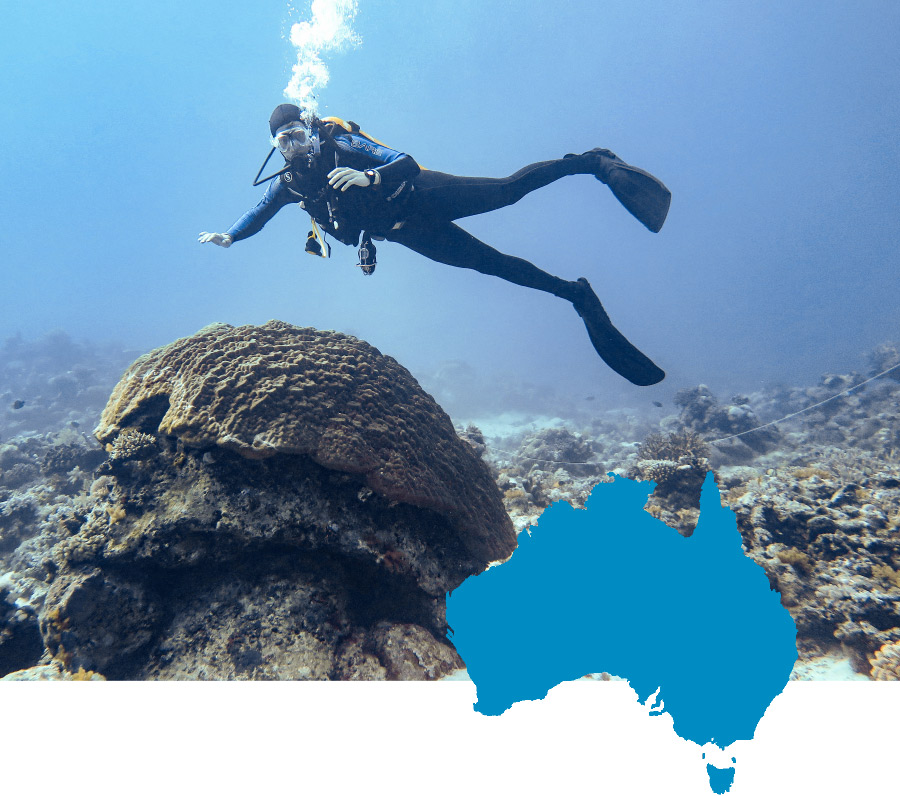

 New Berlin, Pa.
New Berlin, Pa.
Late last summer, on Lake Hopatcong, N.J., Matt Rulon ’21 went wakeboarding for the first time. He managed to stand on the board — a tall order for a beginner — but the more experienced riders with him weren’t so satisfied. The wakeboard they rode was too stiff and too heavy for a quality ride. Rulon’s mission for the next year was to make it better.
What They’re Doing
Supported by a grant from the Pennsylvania Department of Community and Economic Development, Rulon and fellow mechanical engineering major Matt Sennett ’21 are helping snowboard manufacturer Gilson Snow expand its product line into wakeboards. The students are manufacturing innovation fellows with Bucknell’s Small Business Development Center (SBDC). With support from mechanical engineering professors Nate Siegel and Craig Beal, they’re creating prototypes at the company’s New Berlin, Pa., factory and testing them with equipment at the College of Engineering.
What They Love
Everything — from becoming experts in a new sport to using their engineering skills to build something real — has been rewarding for the students. But the outcome they’re working toward is the most exciting aspect.
“Bringing this product into production would create jobs, which is the goal of the grant,” says Rulon. “But just bringing a product to market will be an incredible experience and a huge bragging point for me.”
— Matt Hughes
 Great Barrier Reef, Australia
Great Barrier Reef, Australia
If you’re looking to accurately predict where the world’s climate is headed, it helps to dive into the research. That was the plan two summers ago when geology major Kyle Fouke ’20 and a team of researchers from the University of Illinois at Urbana–Champaign traveled 9,000 miles to the Great Barrier Reef in Australia. Their plan: Dive down to the coral reef for science.


Coral skeletons, like tree rings, offer a window into the past. Scientists rely on these skeletons to study past climate patterns and make remarkably accurate predictions about the future of our planet. But when Fouke and his team studied their samples from Australia, they discovered something that could affect global climate predictions. “We established a correction factor based on microscopy and chemistry, allowing coral skeletons to be used as the gold standard for accurate climate predictions,” he says.
How He Did It
After collecting cores of the coral, extracted with permission from the Australian Research Council, Fouke and his team cut the coral into thin slices — each three times thinner than a human hair. By examining these thin sections with cutting- edge microscopes, Fouke realized the original temperature calculations were incorrect. Because of physical, chemical and biological alternation on the sea floor — known as diagenesis — some measurements were off by as much as 16 degrees Fahrenheit. Fouke says, “Future calculations can be made to account for this diagenesis, allowing future predictions to be more accurate.”
— Bryan Wendell